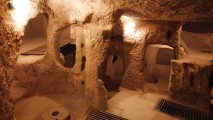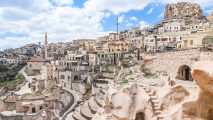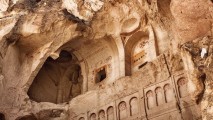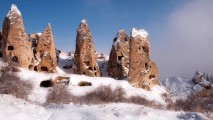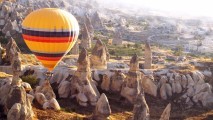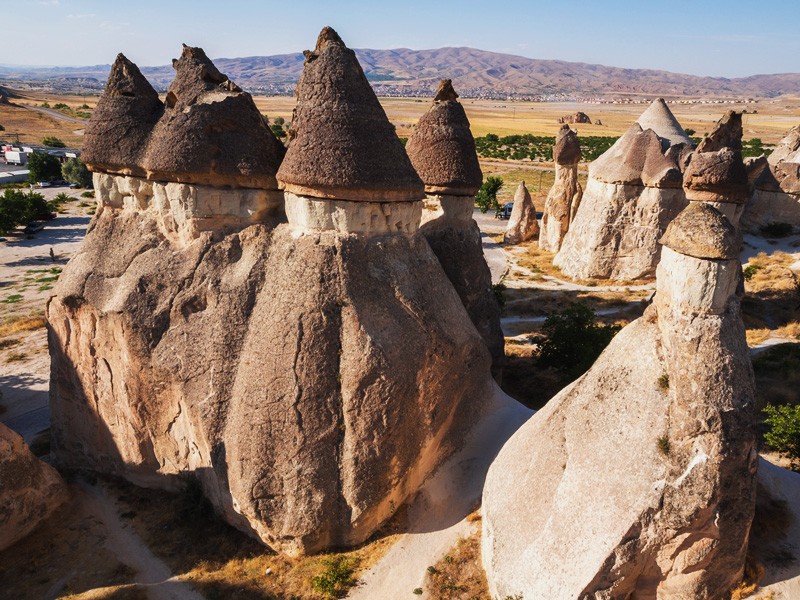
Located in central Turkey, Cappadocia is an extraordinary destination celebrated for its moon-like landscapes, subterranean cities, mushroom-shaped rock formations, rock-hewn houses, and cave churches. Stretching across the provinces of Aksaray, Nevsehir, Nigde, Kayseri, and Kirsehir in central Anatolia, Cappadocia is nestled between the Taurus Mountains and the Black Sea region. The name “Cappadocia” derives from the Persian term for “the land of beautiful horses,” with its history dating back to the 6th century BC. The Persians called the inhabitants “Cappadocians,” while the Greeks referred to them as “White Syrians” or simply “Syrians,” and biblical references also acknowledge this region.
The breathtaking landscape of Cappadocia, sculpted by natural elements such as wind, rain, and floods over millennia, features the iconic fairy chimneys, formed from eroded tuff, a type of volcanic rock.
Ancient Cappadocians built underground cities for refuge from wildlife and harsh climates. Among these, Derinkuyu is the largest, consisting of interconnected chambers and tunnels secured by massive stone doors.
Cappadocia’s history is rich, having been home to Assyrians, Hittites, Phrygians, Persians, Byzantines, Seljuks, and Ottomans. Initially settled by Assyrians who established trade colonies, the region later became a crucial part of the Hittite Empire, followed by Phrygian, Persian, and Roman rule.
In the 2nd century AD, early Christians sought sanctuary here from Roman persecution, forming a significant Christian community. They utilized the underground cities as hideouts and expanded them to include living quarters, ventilation systems, wine production areas, churches, and more.
Cappadocia faced Arab invasions in 647 AD and later fell under Seljuk and then Ottoman rule.
Noteworthy Sites in Cappadocia:
1. Goreme: Nestled amidst fairy chimneys, Goreme boasts a blend of Roman and Christian historical influences, recognized as a UNESCO World Heritage Site in 1985 for its rock churches.
2. Uchisar: Famous for its castle offering panoramic views, Uchisar is a strategic site with rock-carved chambers, houses, and storages.
3. Urgup: The largest town in Cappadocia, Urgup is a tourist hub known for its vibrant atmosphere and significant role in wine production.
4. Devrent Valley: Known for its moon-like landscape and fairy chimneys resembling animals and objects, inviting imaginative exploration.
5. Pasabag: Also called “Monks Valley,” Pasabag is famous for its cone-shaped rock formations and was once home to hermit Simeon monks.
6. Avanos: Famous for its pottery-making tradition, Avanos is separated from Cappadocia by Turkey’s longest river, the Kizilirmak, and offers a rich heritage of ceramic arts.
These sites, among others, make Cappadocia a fascinating area to explore, offering a unique blend of natural beauty, historical depth, and cultural richness. Cappadocia is not just a visual spectacle but also a place where history, culture, and nature intertwine, providing a profound journey through time and an indelible experience for those who visit.


